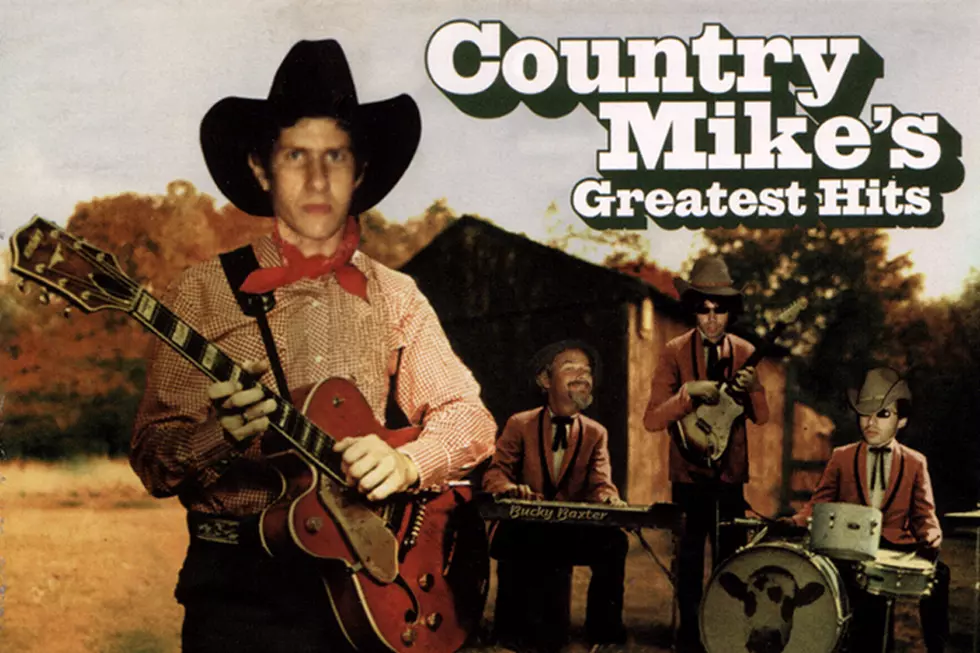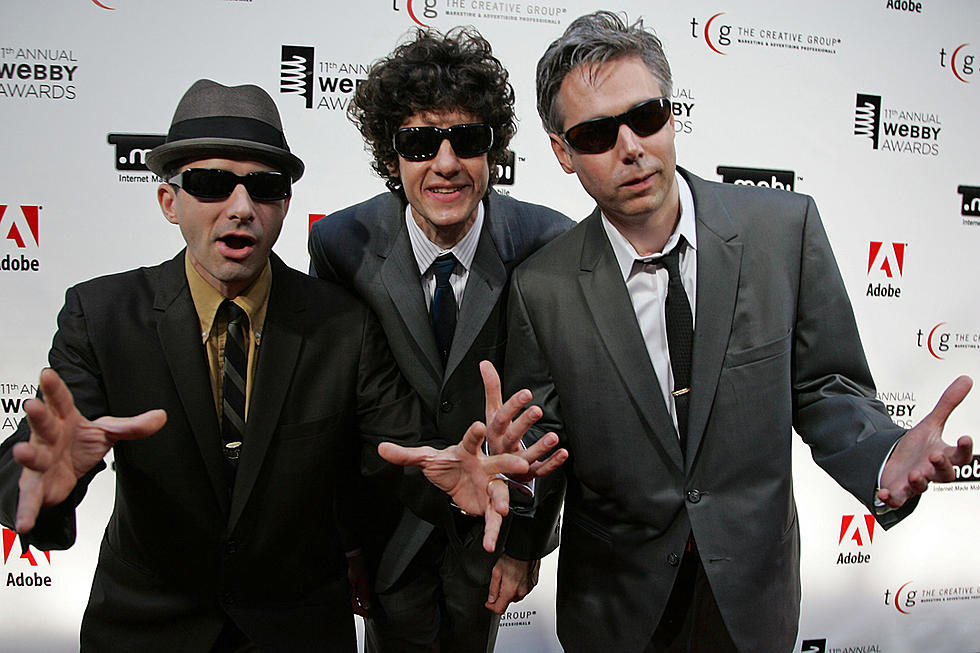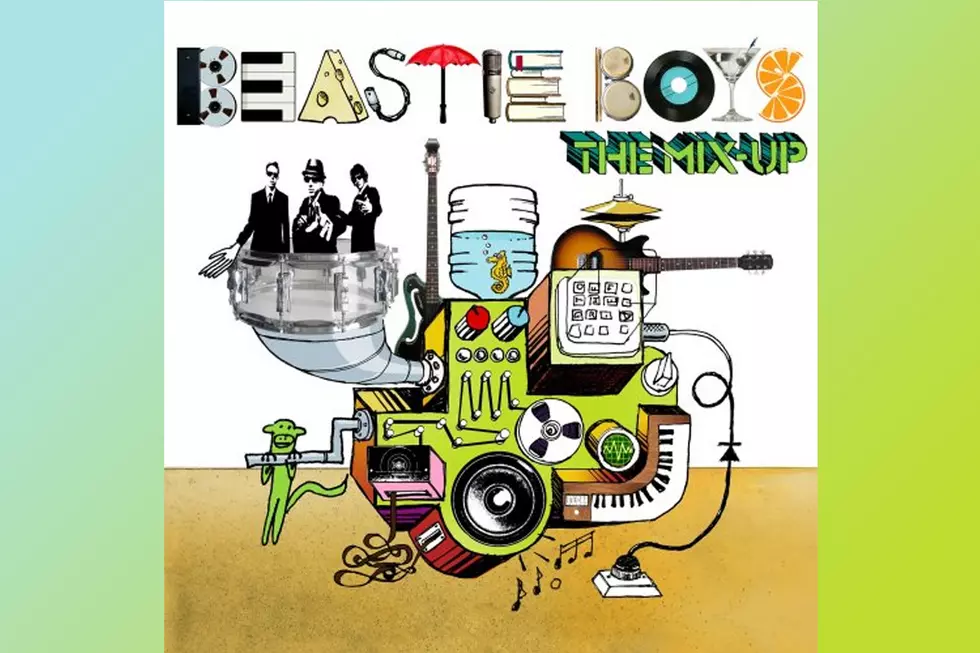25 Years Ago: Beastie Boys Pick Up Instruments, Get Down on ‘Check Your Head’
After you make the Sgt. Pepper's Lonely Hearts Club Band of hip-hop, what do you do for an encore? If you were the Beastie Boys in the early ’90s, you started over.
Although Paul’s Boutique, the trio’s second album, slowly became known as an influential masterpiece, the 1989 release was perceived as something of a flop at the time. It certainly was when compared to the sales and media attention generated by the Beasties’ debut, Licensed to Ill -- the first hip-hop record to go to No. 1 on the Billboard album chart. But Paul’s commercial disappointment ended up giving the boys some breathing room. They were already under contract to make another album for Capitol, and now the label seemed to have zero expectations.
“It was pretty much when everyone who was at Capitol when Paul’s Boutique came out either left or got fired,” Mike “Mike D” Diamond, recalled to Wax Poetics. “We had this weird sense of freedom, because there was nobody [at Capitol] that we were in touch with. It wasn’t like there were these people there counting on us to sell millions of records. Nobody was on top of us; we could just go off and do our own s---.”
In self-imposed exile in Los Angeles, the New Yorkers began to return to their roots as a hardcore punk band, dropping the mics and picking up the instruments they once played: Adam “Ad-Rock” Horovitz on guitar, Adam “MCA” Yauch on bass and Diamond on drums. But instead of reliving their punk glory days, the Beasties began to jam on funky, R&B-based material. Each member took inspiration from his record collection.
“The Crusaders, Eugene McDaniels, and James Brown records were always important,” Horovitz said. “A lot of funk and reggae records and the Slits’ album were a really big deal to us. The punk-disco bands were also a big influence-like Gang of Four and ESG. Just a mixture of different things. And bands like the Clash were always important in how they tried to do different things. We just were into funky music and wanted to play it. At that particular moment in time, we weren’t really listening to rap or punk; all we were doing was finding beats and samples. But we were like, ‘F---, let’s just play it!’ Having four dudes stand around a sampler just wasn’t exciting.”
Listen to "In 3's"
An essential ingredient in the jam sessions (which began in Horovitz’s apartment but were moved to a rehearsal space when neighbors complained about the noise) was Mark “Money Mark” Ramos Nishita, a carpenter who moonlighted as a keyboard player. Mario Caldato Jr., who had engineered Paul’s Boutique introduced the band to his buddy – who, ironically, was a better musician as an amateur than the three guys who had sold millions of records.
“Mark was leader, the musical guy because he was the most proficient on his instrument and he would start a little groove,” Caldato said in a 2008 lecture at Red Bull Music Academy. “‘OK, play in this key here, G or A or whatever,’ and the guys were like ‘OK,’ and would just try to groove. There was no pressure on nothing.”
Caldato began recording these jam sessions with a DAT (digital audio tape) recorder, amassing stacks of tapes. Some were a mess, but other moments were great. As the Beastie Boys mixed their punk attitudes with their funk passions, they also reintegrated hip-hop into the creative mix. The members began “sampling” grooves to make and trade old-school “pause tapes.” This was a method in which an amateur MC could record a snippet of a song onto a tape, pause the tape, then record another snippet – essentially creating a DIY sample loop.
“On a lot of those pause-tapes, there would be a hardcore song and right after that a groove song, then a funk song and then a hip-hop song,” Yauch remembered. “Sometimes we were putting old things we were listening to and new things we were finding. So we made copies of these pause-tapes and trading with each other. In a lot of ways, Check Your Head is a pause-tape of that style – but we played music on it.”
But to record that music, the Beasties would need a studio. Instead of setting up camp at one of L.A.’s many options, the band, Caldato and Nishita collaborated on creating their own. They leased a large community center above a drug store in the Atwater Village neighborhood. Caldato furnished it with equipment, Nishita built the control room (putting those carpentry skills to use) and the Beastie Boys installed a basketball hoop and skateboard ramps in the big room. They named it G-Son after a plumber’s sign next door that was supposed to read “Gilson,” but the letters “I” and “L” had fallen off.
G-Son gave the Beasties the chance to record at their own pace, with Nishita contributing and Caldato co-producing. Horovitz could go off and make a movie, Yauch could become a Buddhist on a trip to Southeast Asia, and there wouldn’t be the pressure (or the extensive studio bills) of having to deliver right away. In ended up being almost a three-year process, but in that process, the Beastie Boys slowly developed this polliwog stew of live instrumentation and samples, rock and funk, grooves, songs and goofs.
Listen to "Jimmy James"
Plus, if Check Your Head hadn’t taken so long, Horovitz, Yauch and Diamond might not have decided to rap on the record. There was a while where it looked like it might be an instrumental record. But Caldato wasn’t sure about that concept.
“Then it got to the point where it had all these instrumental tracks and we were like, ‘Well, you should maybe do a rap on something.’ But nobody wanted to do a rap,” Caldato said. “The first guy who stepped up to bat was MCA, he pulled me aside and said, ‘I’ve got this idea, this [Jimi] Hendrix stuff that I really like.’ He put it together with a beat, and it was the ‘Jimmy James’ track. … The guys were really excited and were like, ‘Man, I want to get on that.’ And that started up their enthusiasm to rap again because they really did not want to rap after Paul’s Boutique.”
And so Check Your Head embraced the same kaleidoscope of influences as Paul’s Boutique, but through the lens of a band that raps – as opposed to three rappers that like bands. The album still sampled classic rockers (Hendrix, Cheap Trick, Ted Nugent), but also brought a new, overpowering funk to the Beasties’ aesthetic, much of it through Yauch’s fuzz bass (see “Gratitude”). Meanwhile, the minor hit “So What’cha Want,” with the three MCs rapping over a Godzilla beat, proved the boys could still rock the mic.
Watch the Video for “So What’cha Want”
Check Your Head was released on April 21, 1992 to acclaim, derision and confusion. Some critics and fans thought the Beasties’ reinvention was groundbreaking, while others felt the album was a muddled disaster. The group’s more hip-hop-devoted fans were disappointed by the smaller doses of rapping while the skyrocketing alternative rock scene were drawn to the boys, perceiving the new sound to be an extension of the music of Fishbone or the Red Hot Chili Peppers.
Although the album didn’t boast any massive singles, it sold steadily and reached No. 10 on the Billboard chart, and the trio went on their first concert tour since 1987. It was during the band’s extensive 1992 world tour that the Beastie Boys destroyed any lingering notions of novelty, and became embraced by the alternative community as trend-setters. Check Your Head was celebrated by listeners who liked both rock and rap. It influenced a generation of fans and musicians who wouldn’t give much thought to those genre divisions. The album wasn’t just a seismic shift for the Beasties, but for pop music.
Every Beastie Boys Album Ranked
More From Diffuser.fm









